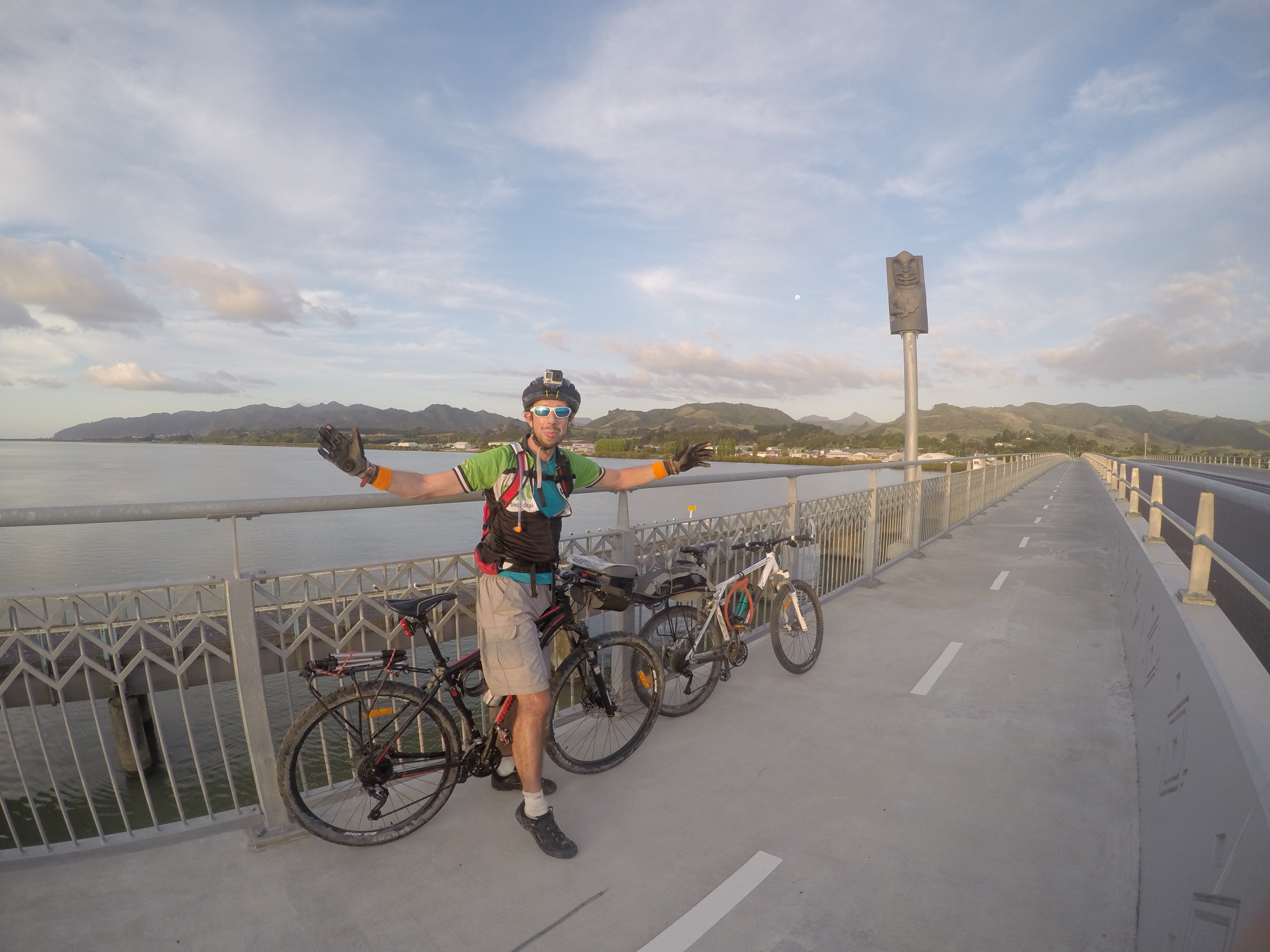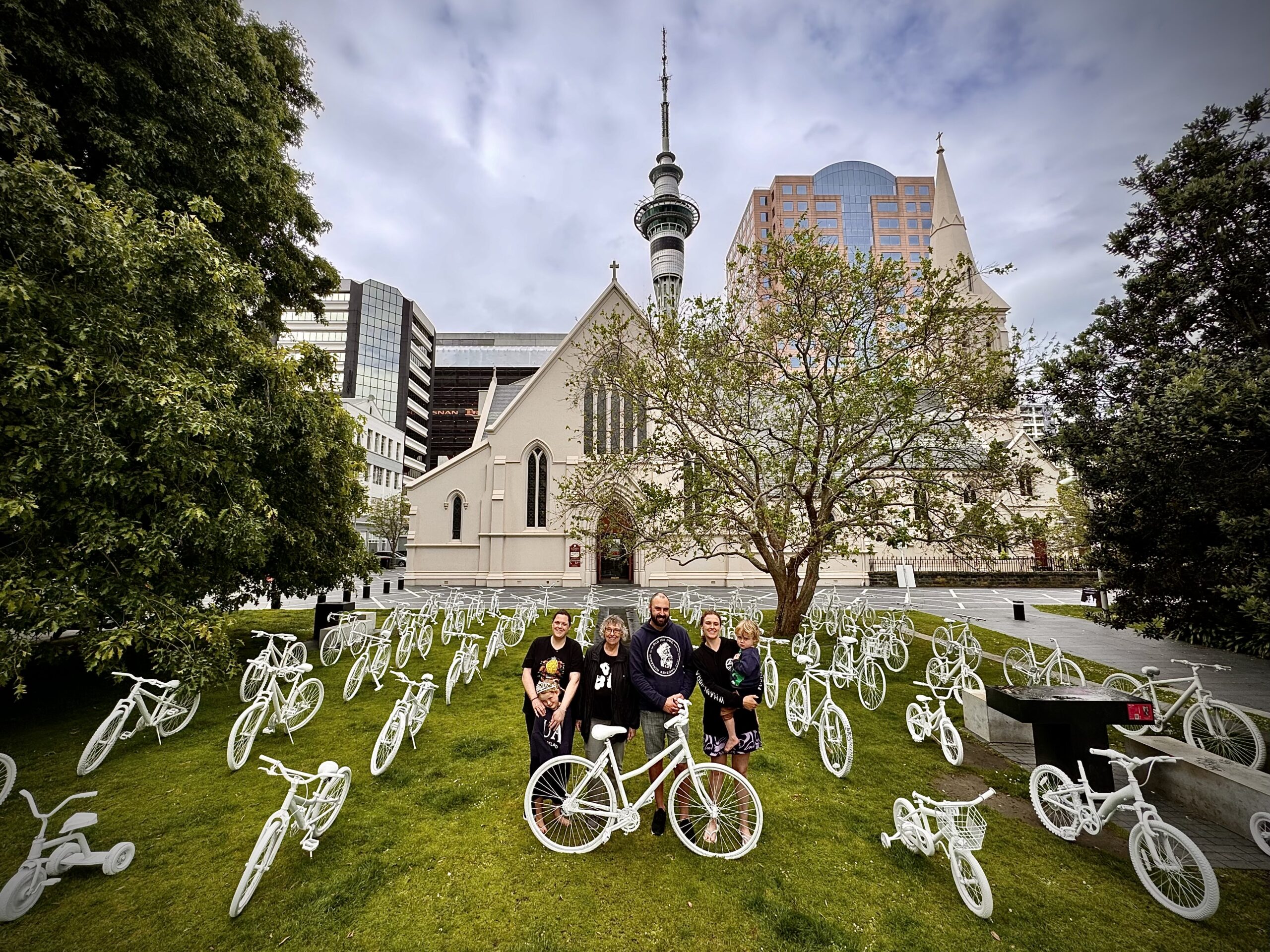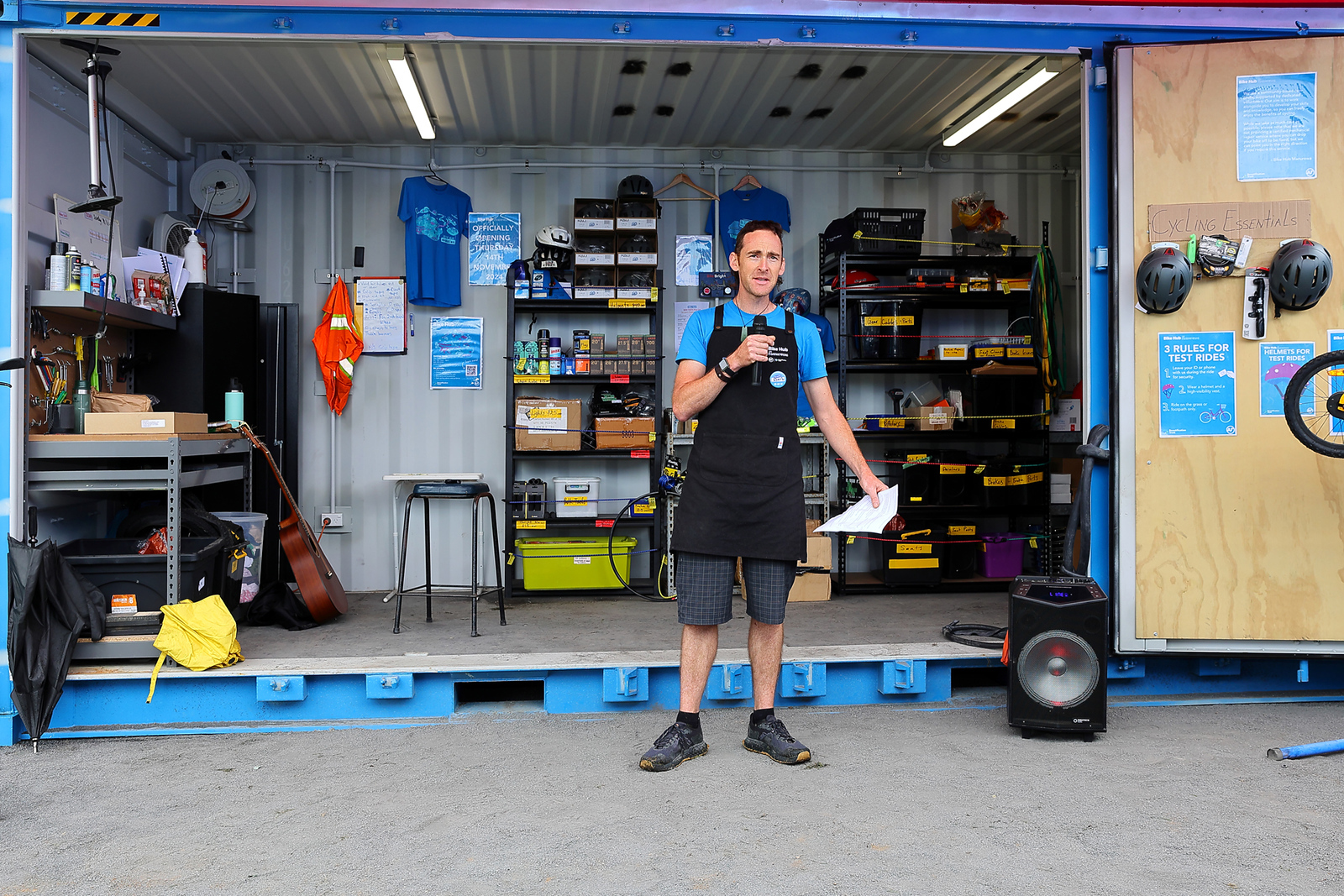People talk about “cycling around New Zealand” – and in 2015, the intrepid Dunc Wilson. person, adventurer, writer and broadcaster, literally did, becoming the first person to circumnavigate Aotearoa… by bike.
Why? In classic New Zealand tradition, because it was there. And, because Dunc’s a good egg, he also fundraised nearly $8000 for St John along the way.
Coasting his way around the country (can we call it a one-man fringe festival?) took most of a year and a whole lot of pedalling: “one man, two wheels, 239 days and almost 11,000 kilometres.” Talk about life on the edge!
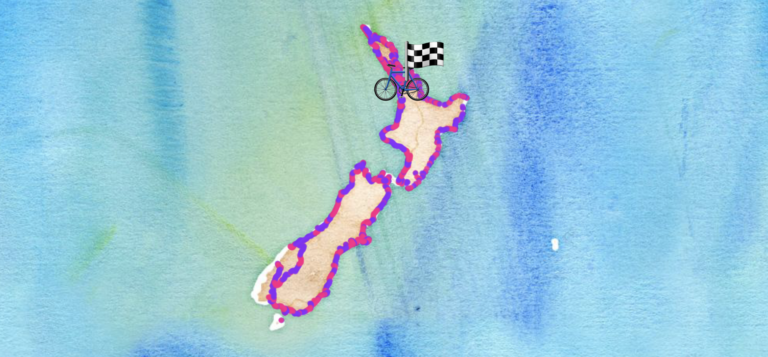
Dunc has since put his epic adventures into beautiful book form, with gorgeous photos. In the author’s own words, The Big Loop: Biking Coastal New Zealand is not so much a how-to guide as “the candid account of what happened out there… the easy days, the struggles, what nearly broke me and, most importantly, the people who carried me round.”
Whether you’re an armchair tourist, a cycle trail fan, or an avid bucket-lister looking for a creative challenge, you’ll be inspired by this book! We’re delighted to share these exclusive extracts, featuring two sections of Ngā Haerenga/ the NZ Cycle Trail: the handy, family-friendly Hauraki Rail Trail (read Viv’s ride report here) and the magnificent Motu Trails of East Cape (read Barb’s experiences here)..
All aboard the rail trail: Miranda to Thames
After Miranda, it was time to cross the border and leave the Auckland Region for the Coromandel district of the Waikato Region. I didn’t know when I’d be back. This big city had held me tightly in its grip for so long, alongside friends, a job, creature comforts and good beaches. I was off to see the rest of the country, from a wholly unique angle. After the border, the junction with State Highway 25 offered two options: right for Auckland or left for Thames; right to quit or left for the adventure of a lifetime.

I chose left — this isn’t a ‘choose your own adventure’ book — and we followed streams of cars driving down the highway, eventually arriving at the new cycle-friendly Kōpū Bridge.

It’s slightly upriver from its decommissioned, one-lane predecessor, which I remember crossing towards the end of its useful life. Traffic lights controlled the vehicle direction, forcing holidaymakers to queue on the western side, waiting patiently for admittance to the Coromandel. Its flimsy-looking wooden rails were the only protection for stray vehicles. Its replacement boasts two lanes and even has a cycle path.

On the other side, we joined the Hauraki Rail Trail, for its final leg into Thames. These closing kilometres used part of Ngā Haerenga, the New Zealand Cycle Trail. The evolution and development of Ngā Haerenga (‘The Journeys’) provided inspiration in my planning and, though I wouldn’t be making full use of its trails, it was great to use sections of these ‘Great Rides’.
Following the old railway route from Kōpū to Thames, the trail is made of finely compacted gravel, leading between paddocks and behind the occasional house.

With food on the brain, Scoot [my riding companion and photographer friend Scott] and I cycled with a new energy and soon caught up with another cyclist. He was older man, perhaps in his sixties, dressed in black, with a loose-fitting helmet siting at an angle on his head. He was pedalling slowly towards Thames but stopped when he heard us and turned his torso to acknowledge us. We waved as we passed.
‘This is my first time on a bike in 55 years!’ Scoot heard him say.
Here was a magic story in so few words: more than five decades without a bike ride, the trail had given this man the impetus to get out and try cycling again. Those words are testament to the unmeasurable effects off-the-road cycleways have. The temptation had become too great for this bloke. Of course, his car may have broken down and he’d nicked the bike from someone’s garden, I’ll never know.
The sun turned to orange as it fell to the west, colouring the mood of the ride — my last with Scoot. We stopped and leant our weary bodies against a fence, admiring the show. Two hundred kilometres in two days; could I keep that up? The physical drain seemed a bargain in exchange for the invaluable lessons. How to win this project had become clearer. No two pieces would be the same, but I’d grown confident I could chip away a piece at a time.
The sun dipped below the horizon and its colours intensified for the final and easiest 2 km. Scoot and I pulled up at a Thai restaurant, where Simon was waiting outside. With the bikes locked to a lamppost, we both slumped simultaneously into the al fresco chairs. On my own from here, it was time for a farewell feast.
In the swim: East Cape encounters
My route from Ōpōtiki to Gisborne, the first city after East Cape, mostly followed State Highway 35. There was a coastal cycle trail, a detour to East Cape and its lighthouse, plus a few minor loops around townships to keep me tracking the coast. It totalled over 400 km.
At Ōpōtiki, I rejoined Ngā Haerenga, for the coastal section of the Motu Trails. Designed as a loop, the other sections take riders high up into the hills, terminating at the township of Mōtū.
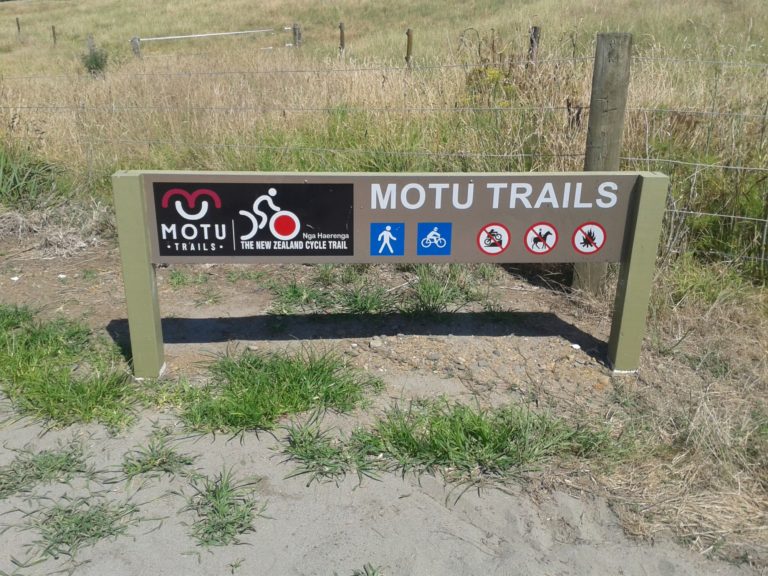
After hurriedly investing in two scones at New World, I was soon biking beside a river stopbank, en route to the trails. High above the river dangled two rope swings and a slide, each aimed at the deep water. Two giggling girls were racing towards them.
Rounding the river bend, a group of young men were hurling themselves off the pedestrian suspension bridge, in an apparent protest against the swings. As I cycled onto the bridge, five of them scaled the bank like commandos, returning for another jump.
‘Where you from?’ said one, in that unmistakeable East Coast Māori accent.
‘Auckland!’
‘Far! Where you going?’
‘Hoping to make Te Kaha today.’
‘Nah, bro. You won’t make Te Kaha . . .’ another laughed.
‘I dunno, he’s made it from Auckland!’ said the first guy.
They returned to their assault on the river and I squeezed the bike past them. It was Motu Trails time! Following a swooping gravel track, behind Hikuwai Beach, the ride quickly switched between brief, pumping climbs and smile-inducing descents.
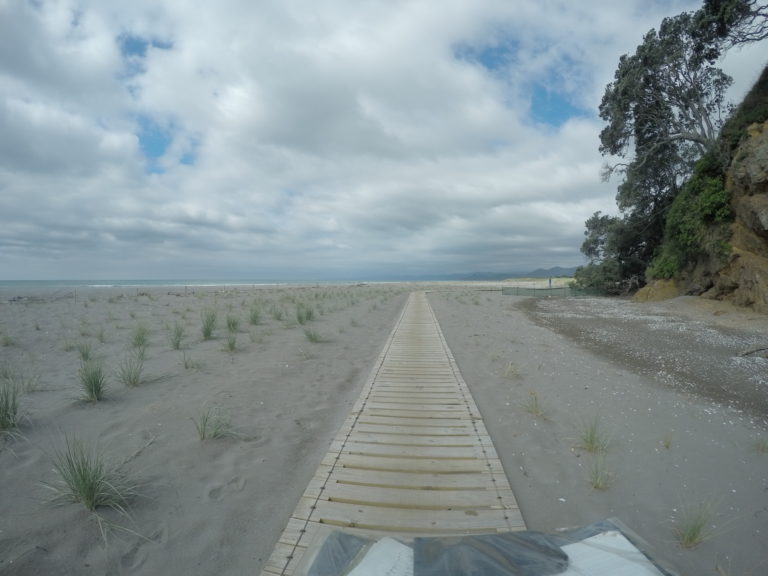
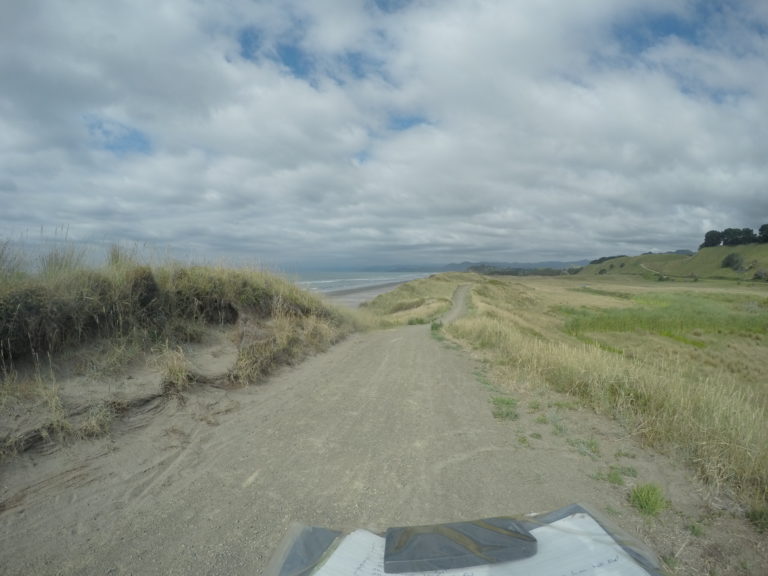
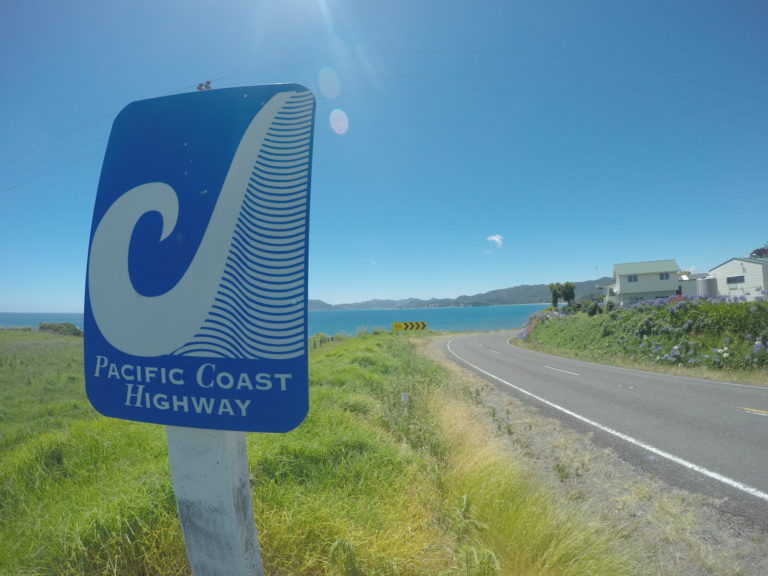
If the entire coastline had been a mixture of flat beaches and trails like Motu, someone would have cycled the coastline yonks ago. However, it wasn’t long until I reached the first of many anti-motorcycle barriers, which also happened to hinder my wide bike’s passage.
I found a gap in the fence large enough to squeeze the bike through the first one, then managed to lift it over a couple more. Some were high enough for me to drag the bike underneath them on its side — scraping the bag on the gravel was bad, but so was my temper. The hassle marred an otherwise brilliant trail. It apparently wasn’t designed for touring cyclists.
Hunger struck, I stopped at a small square of decking with a canvas shade-sail. A tradesman was working nearby, knocking nails into wood. A familiar live talk radio station blasted from the cab of his ute. I sat on the deck chewing a scone and watched the smoke pour from the distant Whakaari (White Island), New Zealand’s most active volcano.
The tradey decided it was smoko time, literally, as he performed the twentieth-century charade of lighting up a cigarette. He sat down on the wooden square thing for a chat, one foot on the ground, one on the bench, his knee bent like a cowboy posing in a tobacco ad.
When he finished, he stood up and muttered ‘time for a swim’ and ambled down to the beach, briefly disappearing from sight below the dunes. When he returned to view, further down the beach, he was stark naked. Trotting casually towards the ocean, the builder’s bum reached the water and dived right in.
— Dunc Wilson, extracts from The Big Loop: Biking Coastal New Zealand (David Bateman, 2019) Find out how to buy the book here.



